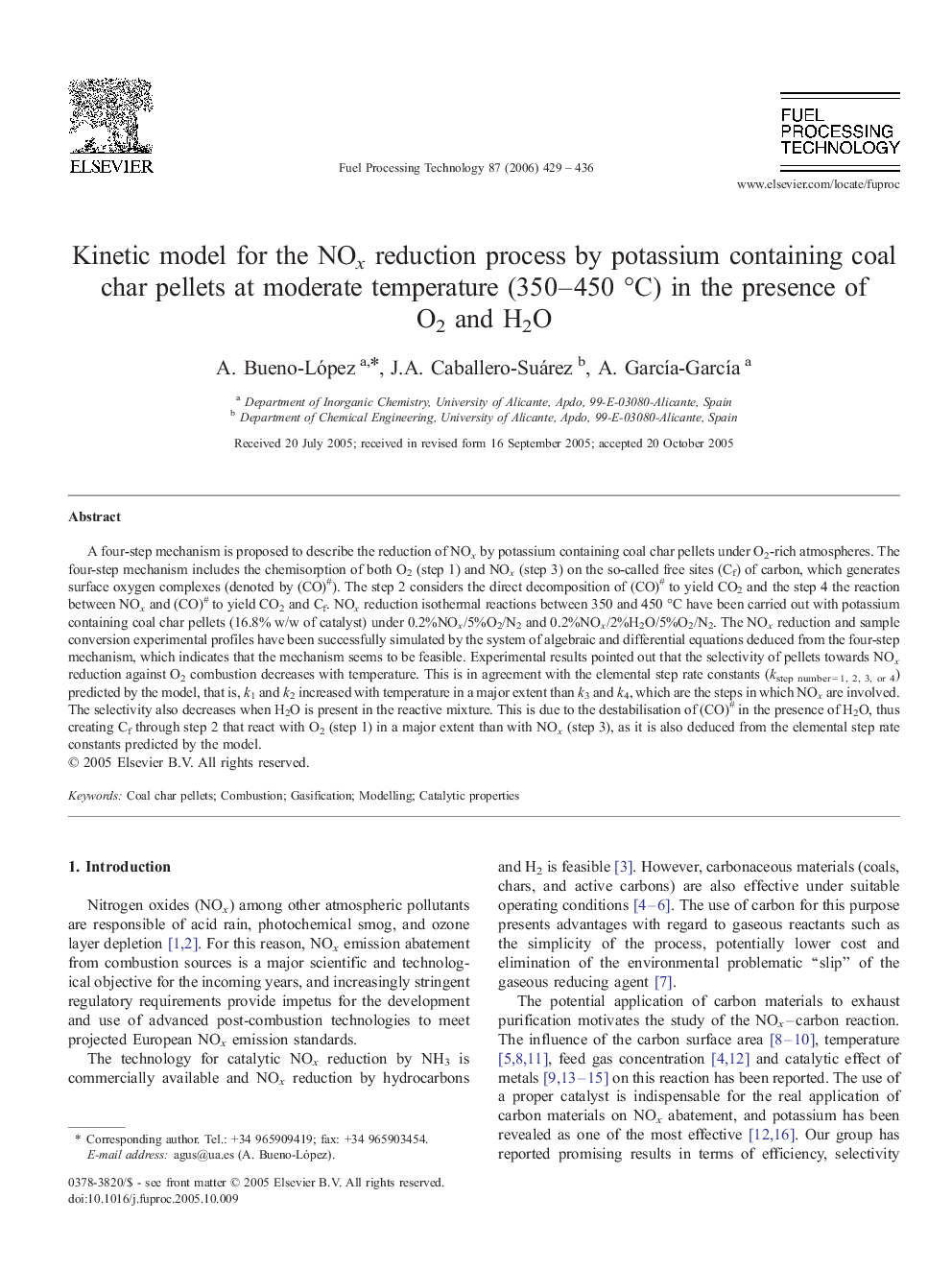| Article ID | Journal | Published Year | Pages | File Type |
|---|---|---|---|---|
| 211645 | Fuel Processing Technology | 2006 | 8 Pages |
A four-step mechanism is proposed to describe the reduction of NOx by potassium containing coal char pellets under O2-rich atmospheres. The four-step mechanism includes the chemisorption of both O2 (step 1) and NOx (step 3) on the so-called free sites (Cf) of carbon, which generates surface oxygen complexes (denoted by (CO)#). The step 2 considers the direct decomposition of (CO)# to yield CO2 and the step 4 the reaction between NOx and (CO)# to yield CO2 and Cf. NOx reduction isothermal reactions between 350 and 450 °C have been carried out with potassium containing coal char pellets (16.8% w/w of catalyst) under 0.2%NOx/5%O2/N2 and 0.2%NOx/2%H2O/5%O2/N2. The NOx reduction and sample conversion experimental profiles have been successfully simulated by the system of algebraic and differential equations deduced from the four-step mechanism, which indicates that the mechanism seems to be feasible. Experimental results pointed out that the selectivity of pellets towards NOx reduction against O2 combustion decreases with temperature. This is in agreement with the elemental step rate constants (kstep number = 1, 2, 3, or 4) predicted by the model, that is, k1 and k2 increased with temperature in a major extent than k3 and k4, which are the steps in which NOx are involved. The selectivity also decreases when H2O is present in the reactive mixture. This is due to the destabilisation of (CO)# in the presence of H2O, thus creating Cf through step 2 that react with O2 (step 1) in a major extent than with NOx (step 3), as it is also deduced from the elemental step rate constants predicted by the model.
